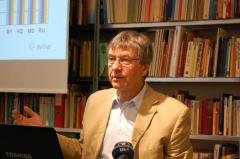FDI in Central, East and Southeast Europe - Hit by Deleveraging
05 June 2014
FDI did not prove resilient to financial deleveraging in 2013. Inter-company loans and capital reserves were repatriated especially from the NMS resulting in low FDI inflow figures.
The New EU Member States (NMS-11), the Southeast European countries (SEE-7) and the countries of the Commonwealth of Independent States (CIS) experienced markedly different FDI inflows in 2013: the NMS-11 registered a 65% decline, the SEE-7 a 2% increase and the five main CIS countries even a 26% increase (see table). Among the NMS, Romania in particular, and Bulgaria to some extent, could attract more FDI than in the previous year. Inflows to the Czech Republic and to Hungary dropped to average from very high levels. But the declines in Slovakia and Poland look really alarming.
The intra-company loan component of FDI was highly negative in many countries as part of the general deleveraging. A large part of FDI was made liquid and repatriated as it had not been invested in physical assets but kept on the accounts of the subsidiaries. At the same time, greenfield investment activity fell just modestly in Poland and Hungary, while it even increased in the Czech Republic and in Slovakia.
Russia is a special case as the high amount of the FDI flowing in and out of the country has been essentially round-tripping Russian capital. Russia received much more FDI capital in 2013 than in the previous year, but outflows from Russia increased even more rapidly resulting in highly negative net FDI. Greenfield activity in the country has been meagre and declining already before the Ukraine conflict. In the first quarter of 2014, FDI dropped in Russia and it was sluggish in the Baltics and in Bulgaria, those NMS most intensively relying on Russia in terms of trade and FDI.
In 2014, the region will be exposed to two main factors that drive FDI into opposing directions. One is the acceleration of economic growth which spurs FDI. The other is the Ukraine–Russia conflict which depresses economic growth and increases investment risk in the affected countries. wiiw expects a rebound of FDI in the NMS with the exception of the Baltic states and Bulgaria. As to Southeast Europe, no major change is expected. Russian FDI will fall back to the level of 2010 and new foreign investment projects will suffer delays. Overall, the small and declining role of FDI in investments can provide only marginal, if any support to economic growth.

Gabor Hunya at the FDI press conference; photo © wiiw
The wiiw Report on FDI in Central, East and Southeast Europe (CESEE) was prepared by wiiw Senior Economist and FDI Expert Gabor Hunya, in close cooperation with the wiiw statistics department. It covers 23 countries of CESEE and is based upon the wiiw FDI Database. It analyses the major features of FDI developments in and out of the countries of the region and is published annually beginning of June.
